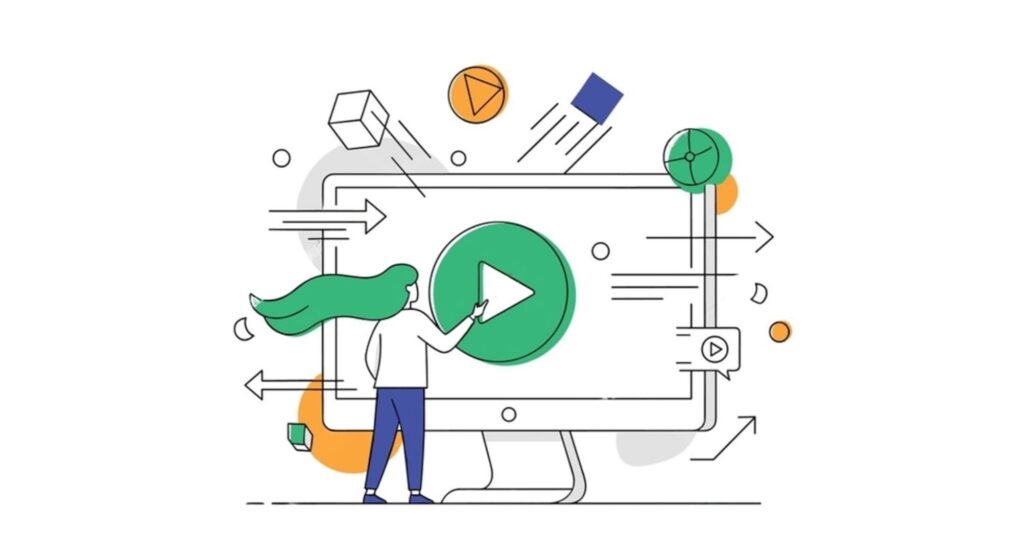
Have you ever clicked on a short video and suddenly understood a complex idea in seconds? That’s the power of an explainer video — a tool that’s been reshaping how businesses communicate for over a decade. Yet, as attention spans shrink and platforms like TikTok and Instagram Reels dominate, many wonder: are explainer videos still effective?
The short answer is yes — they’re not only effective, but they’ve adapted beautifully to the modern marketing landscape. Let’s explore how explainer videos continue to thrive, why they work so well, and what makes the difference between a forgettable clip and a genuinely engaging piece of storytelling.
What Is an Explainer Video?
At its core, an explainer video is a short, focused piece of content — usually between one and three minutes long — that identifies a problem, presents a clear solution, and encourages action.
Unlike a tutorial or a long presentation, an explainer is designed to make viewers say, “I get it now.” The format varies:
- 2D or 3D animation for abstract ideas
- Live action for human stories and tangible products
- Screencasts for software demonstrations
- Whiteboard or kinetic typography for simple process overviews
The magic of an explainer lies in its simplicity — giving viewers just enough to understand and take the next step.
Why Explainer Videos Still Work
Despite shifts in digital habits, explainer videos remain one of the most powerful tools in marketing for a simple reason: they make information easy to absorb and remember.
According to communication theories such as dual coding and cognitive load, combining visuals with voice helps people process and recall information more effectively than text alone. A viewer watching a two-minute video is far more likely to remember the message than someone scrolling through a long article.
Explainer videos also improve engagement metrics — higher completion rates, better SEO performance, and stronger conversion outcomes. Dropbox’s early success is a prime example: one clean, minimal landing page paired with a single explainer video helped users instantly grasp what the product did.
Clarity sells.
The Ingredients of an Effective Explainer
A strong explainer video doesn’t happen by accident — it’s a crafted piece of communication that balances visual storytelling with verbal precision. The best ones share several traits:
- A clear, concise script — short sentences, simple vocabulary, and a natural tone.
- A calm, confident voiceover — guiding the viewer with authority and warmth.
- Readable captions — improving accessibility and silent viewing on social feeds.
- Purposeful visuals — every frame supports the message, not just the aesthetics.
- A fitting soundtrack — enhancing emotion without overwhelming the narration.
Animation often shines when the subject is abstract — for example, explaining how an algorithm works or illustrating a service process. The most effective videos use every second wisely, removing clutter so that the message takes centre stage.
What the Research Says
Studies like Anna Schorn’s Explainer Videos in Communication (2022) define them as short films that use storytelling to make complex ideas accessible. They combine a conversational tone, a problem-solution narrative, and a strong balance of visuals and narration.
This isn’t just about teaching — it’s about persuasion. Explainers simplify without oversimplifying, helping audiences make informed decisions. But with that persuasive power comes responsibility. When used carelessly, they can give viewers a false sense of understanding.
The ethical way forward? Be transparent about scope, show evidence when appropriate, and use explainers as entry points — not replacements — for deeper information.
How the Style Has Changed
Remember the era of cheerful ukulele tracks and flat vector animations? That aesthetic has largely passed. Today’s explainers are more polished, brand-specific, and platform-aware.
Modern brands integrate their visual identity, use 3D design where depth matters, and mix live-action with motion graphics for realism. Social media has also led to the rise of micro-explainers — shorter cuts designed to deliver the same message in 10 to 20 seconds.
The most effective approach now? A full-length version for your website and bite-sized edits for social platforms — each maintaining clarity and purpose.
How to Create an Explainer Video That Works
- Define your goal – What’s the single takeaway message?
- Select your format – Animation, live action, screencast, or mixed media.
- Storyboard your idea – Keep it simple: hook → problem → solution → benefits → CTA.
- Write a tight script – Every line should earn its place.
- Record quality audio – Viewers forgive visual errors more than poor sound.
- Edit for pace and clarity – Trim pauses, sync visuals, and keep the rhythm natural.
- End with a clear call-to-action – “Start a free trial”, “Book a demo”, or “Find out more.”
The best videos feel effortless, but behind the scenes, every detail is deliberate.
Where to Use Explainer Videos
A well-placed explainer video can elevate your entire communication strategy. Some of the most effective placements include:
- Homepages – offering an instant overview for new visitors.
- Product or feature pages – explaining value in context.
- Onboarding emails – reducing confusion for new users.
- Social channels – short, captioned edits designed for silent viewing.
- Presentations and training – keeping audiences engaged before diving into detail.
These videos are not only tools for selling but also for clarifying. A clear explainer reduces support tickets, answers repetitive questions, and builds trust.
Measuring Success
So how do you know your explainer is working? Look beyond vanity metrics. Key indicators include:
- Watch time and completion rates
- Click-through to your call-to-action
- Conversion rate changes
- Bounce rate reductions
- Decreases in repetitive customer queries
Many businesses find that after publishing a good explainer, conversion rates increase, and customers feel more confident in what they’re buying or using.
Ask new clients what persuaded them — you’ll often hear: “I watched the video.”
The Cost and Time Investment
Professional animated explainers typically cost between £2,000 and £10,000, depending on complexity and style. Live action generally requires a higher budget for crew, location, and editing.
From concept to completion, allow around four to six weeks. While DIY tools such as Canva and Vyond can be helpful for basic needs, professionally crafted videos deliver far greater polish, pacing, and narrative flow — especially when your message truly matters.
The Future of Explainer Videos
The next generation of explainers is even more interactive and adaptable. We’re already seeing:
- Short-form and micro-explainers optimised for mobile feeds
- Interactive chapters that let users choose what they want to learn
- AR and VR explainers for product training and immersive demos
- AI-assisted scripting and editing, speeding up production while maintaining human oversight
These changes all point in the same direction: clarity delivered faster, smarter, and more personally than ever before.
Final Thoughts
Explainer videos haven’t vanished — they’ve refined their purpose. They’ve adapted to shorter attention spans, smarter storytelling, and the demand for instant clarity.
When executed with care, they remain one of the most effective tools in a marketer’s toolkit — simplifying the complex, educating the audience, and driving meaningful action.
So, are explainer videos effective? Absolutely. They just look and sound a little different now — and that’s exactly why they continue to work.
i-Q&A
Helping businesses communicate with confidence through smart, creative, and evidence-based digital strategy.
